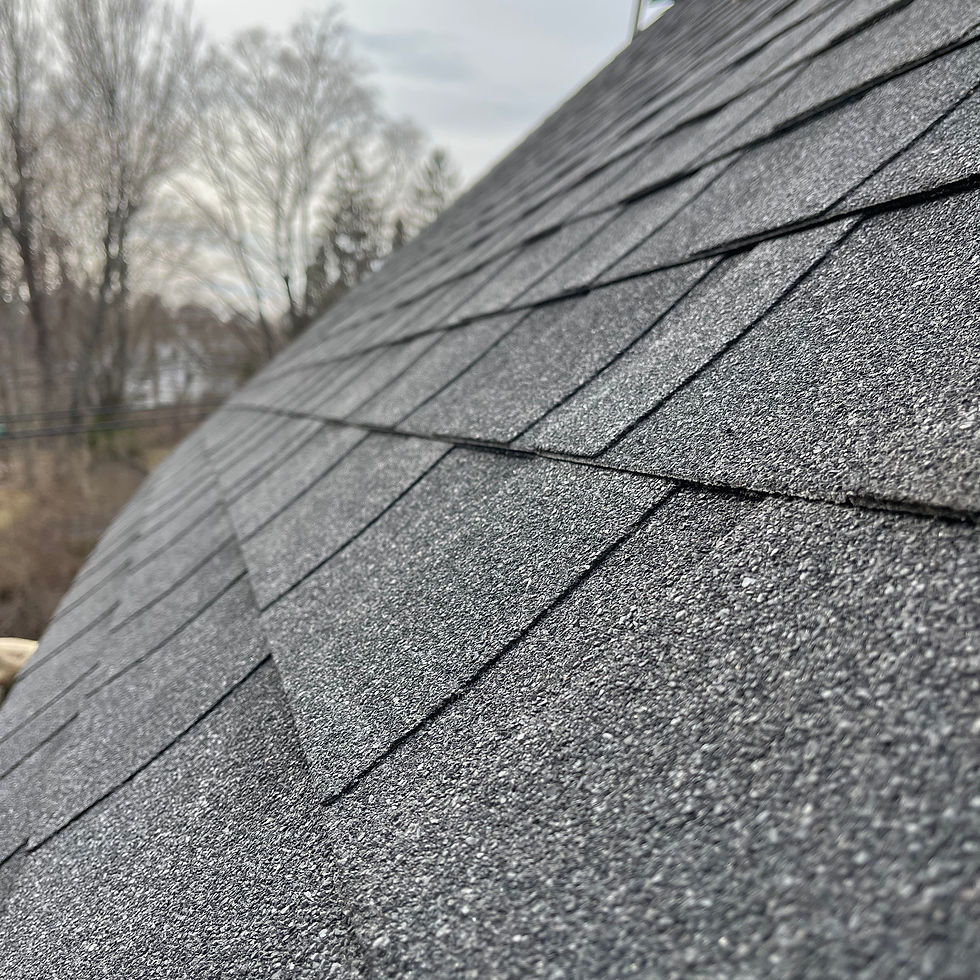What is the Best Roof Ventilation System for Your Roof?
- Refined Home Services

- Sep 9
- 4 min read
Updated: Sep 12
Proper roof ventilation is essential for maintaining a healthy, long-lasting roof. Different roofing materials require different ventilation solutions to prevent heat buildup, moisture damage, and energy waste. In this guide, we’ll break down the best ventilation systems for asphalt shingles, metal roofs, cedar shakes, and flat roofs, helping homeowners make smart choices for their roof type.

Why Proper Roof Ventilation Matters
Roof ventilation allows air to flow through the attic, helping to:
Prevent heat buildup in summer.
Reduce moisture and condensation in winter.
Extend the lifespan of shingles, shakes, and roofing membranes.
Lower energy costs by improving HVAC efficiency.
The key to adequate ventilation is a balance between intake vents (soffit vents) and exhaust vents (ridge vents, turbines, or powered vents).
Best Roof Ventilation Systems by Roof Type

1. Asphalt Shingle Roofs
Recommended Ventilation Systems:
Ridge and Soffit Vent System: Provides continuous airflow from the eaves to the ridge. This is the most common and effective setup.
Gable Vents: Can supplement airflow in attics without a ridge vent.
Powered Attic Fans: Ideal for large homes or areas with hot climates.
Why it works: Asphalt shingles trap heat and can degrade faster if moisture accumulates. Ridge and soffit vents allow hot, humid air to escape while drawing in cool air from the eaves, keeping shingles and roof decking dry.
Tip: Always ensure soffit vents are unobstructed by insulation to maintain airflow.

2. Metal Roofs
Recommended Ventilation Systems:
Ridge Vent and Soffit Vent Combo: Works for standing seam or corrugated metal panels.
Continuous Ventilation Panels: Some metal roofs integrate ventilation into the panel system.
Turbine Vents: Can remove hot air quickly in areas with consistent wind.
Why it works: Metal reflects heat, but condensation underneath can lead to rust or mold. Proper ventilation removes trapped moisture, protecting the metal and the roof deck.
Tip: Add an underlayment with vapor barrier properties to prevent condensation from contacting the roof deck.
3. Cedar Shake Roofs
Recommended Ventilation Systems:
Ridge Vent with Soffit Vents: Allows air to flow beneath the shakes, preventing moisture accumulation.
Ventilated Battens: Wooden battens installed under shakes create a gap for airflow.
Turbine Vents: Optional, especially in humid or shaded areas.
Why it works: Cedar is naturally moisture-resistant but can rot if ventilation is poor. Continuous airflow under the shakes extends the lifespan and prevents mold or mildew growth.
Tip: Avoid covering the attic floor with heavy insulation that blocks soffit vents.

4. Flat Roofs
Recommended Ventilation Systems:
Powered Roof Vents: Ideal for commercial or residential flat roofs where natural airflow is limited.
Parapet Vents: Built into roof edges for continuous ventilation.
Scuppers and Drains: Not traditional vents, but they help remove hot air and moisture.
Why it works: Flat roofs lack natural slope for airflow, so mechanical ventilation ensures heat and moisture don’t get trapped, which could otherwise cause membrane damage or leaks.
Tip: Ensure vents are installed in combination with proper slope and drainage to prevent water pooling.
Signs You May Need a Ventilation Upgrade
Even with a good roof, poor ventilation can lead to problems. Look for these warning signs:
Premature shingle curling or fading
Ice dams form in winter
Moisture, mold, or mildew in the attic
Hot attic temperatures during summer
Rust or corrosion on metal roofing
If you notice any of these issues, a professional roof inspection can determine if additional vents or an upgraded system is needed.
DIY vs. Professional Installation
While some vents, like gable or turbine vents, can be installed by handy homeowners, most roof ventilation upgrades require professional expertise. Proper placement, sizing, and balance between intake and exhaust vents are critical. Incorrect installation can lead to:
Increased moisture damage
Higher energy bills
Shortened roof lifespan
A roofing contractor can evaluate your roof type, climate, and attic space to design a system that maximizes efficiency and protection.
Maintenance Tips for Roof Ventilation
Inspect vents regularly: Remove debris, leaves, or insulation that blocks airflow.
Check attic insulation: Ensure it doesn’t cover soffit vents.
Look for damage: Torn ridge vents or corroded turbines should be replaced promptly.
Upgrade during roof replacement: Adding ridge or powered vents can improve airflow and extend the life of a new roof.
Final Thoughts
A well-ventilated roof protects your home, reduces energy costs, and prolongs the lifespan of shingles, metal panels, shakes, and membranes. The best ventilation system depends on your roof type, local climate, and home design:
Asphalt shingles: Ridge and soffit vents for maximum airflow
Metal roofs: Ridge vents, soffit vents, or turbines to prevent condensation
Cedar shakes: Ridge vent with ventilated battens to prevent moisture
Flat roofs: Powered vents or parapet vents for consistent airflow
Investing in the proper ventilation system is one of the smartest ways to protect your roof and your home. Refined Home Services offers free roof inspections and roof replacement services to help protect your home for decades to come.


